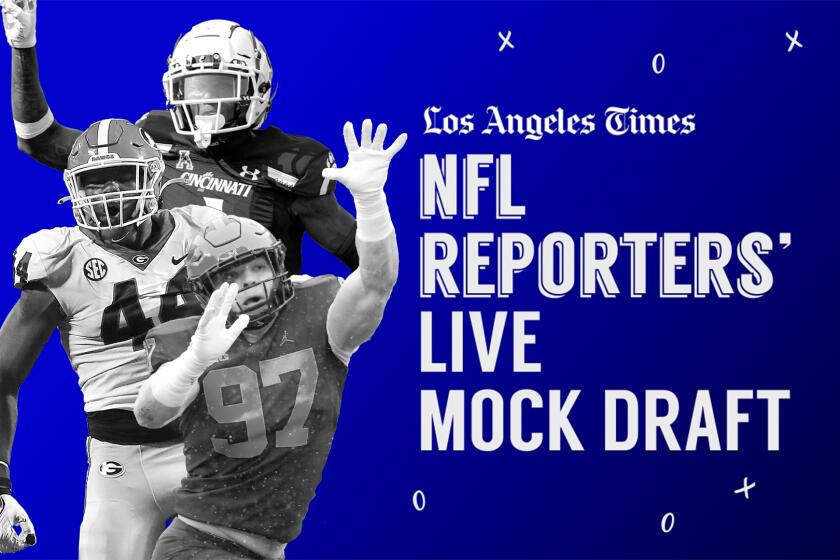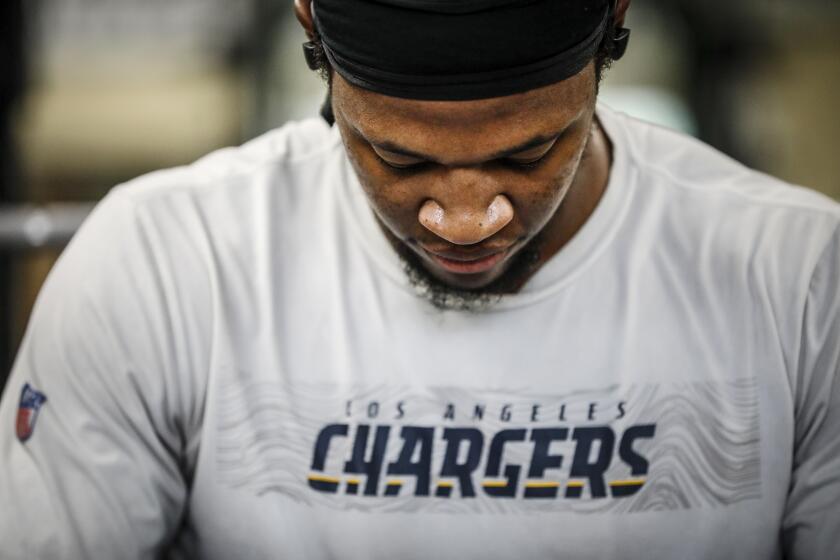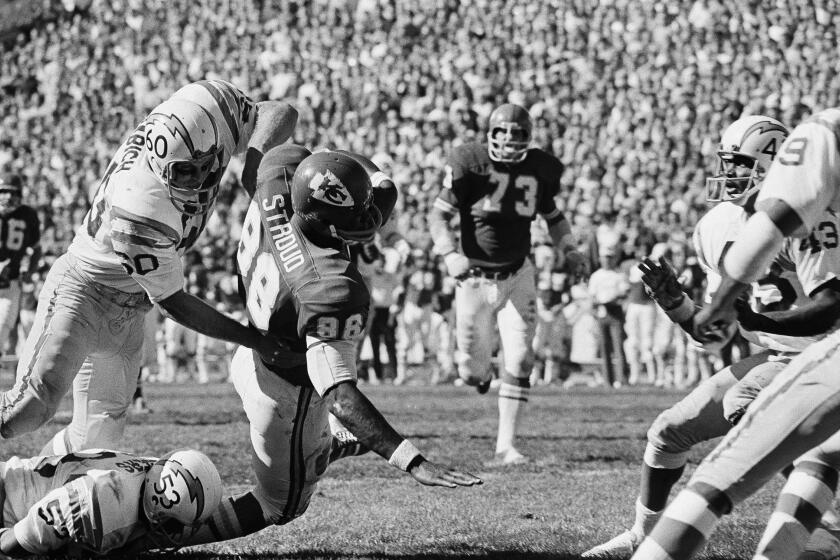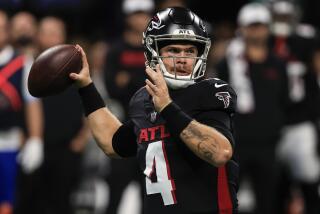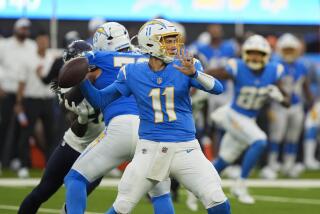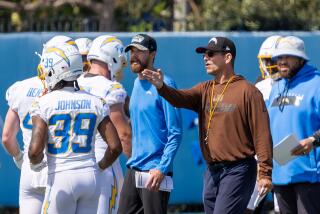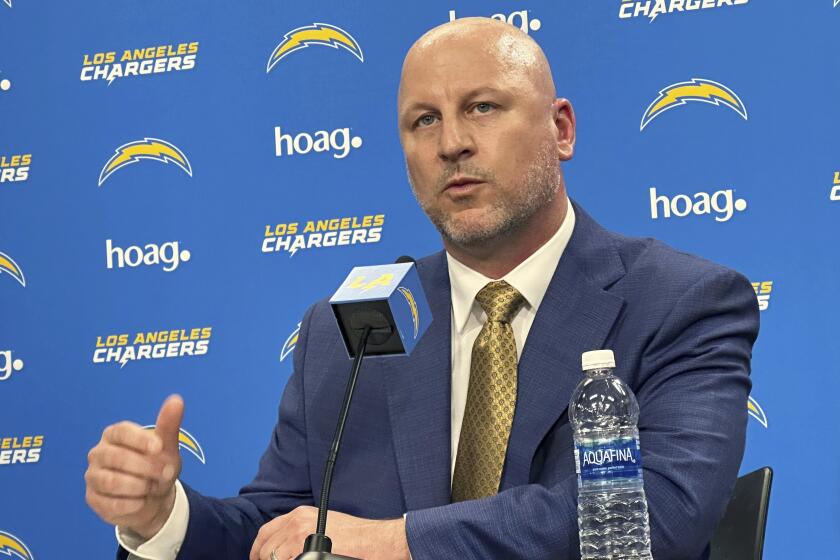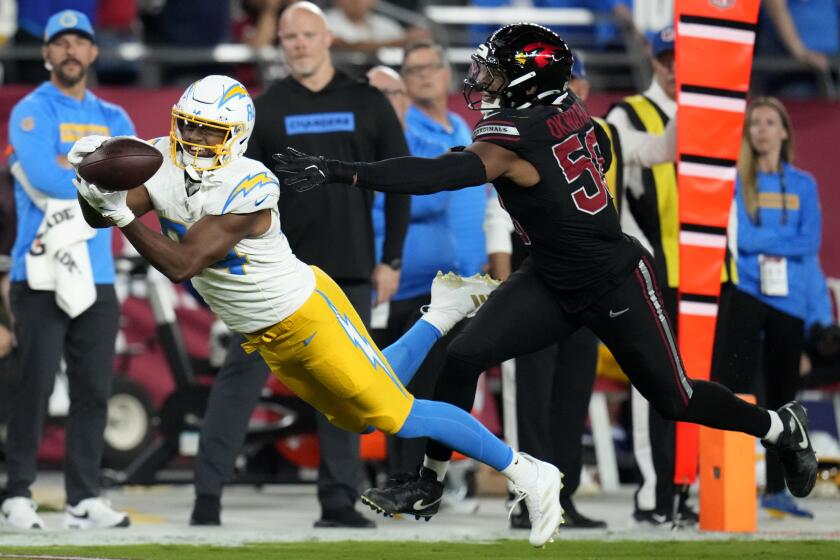Chargers have drafted well in first round under GM Tom Telesco, but look at the rest
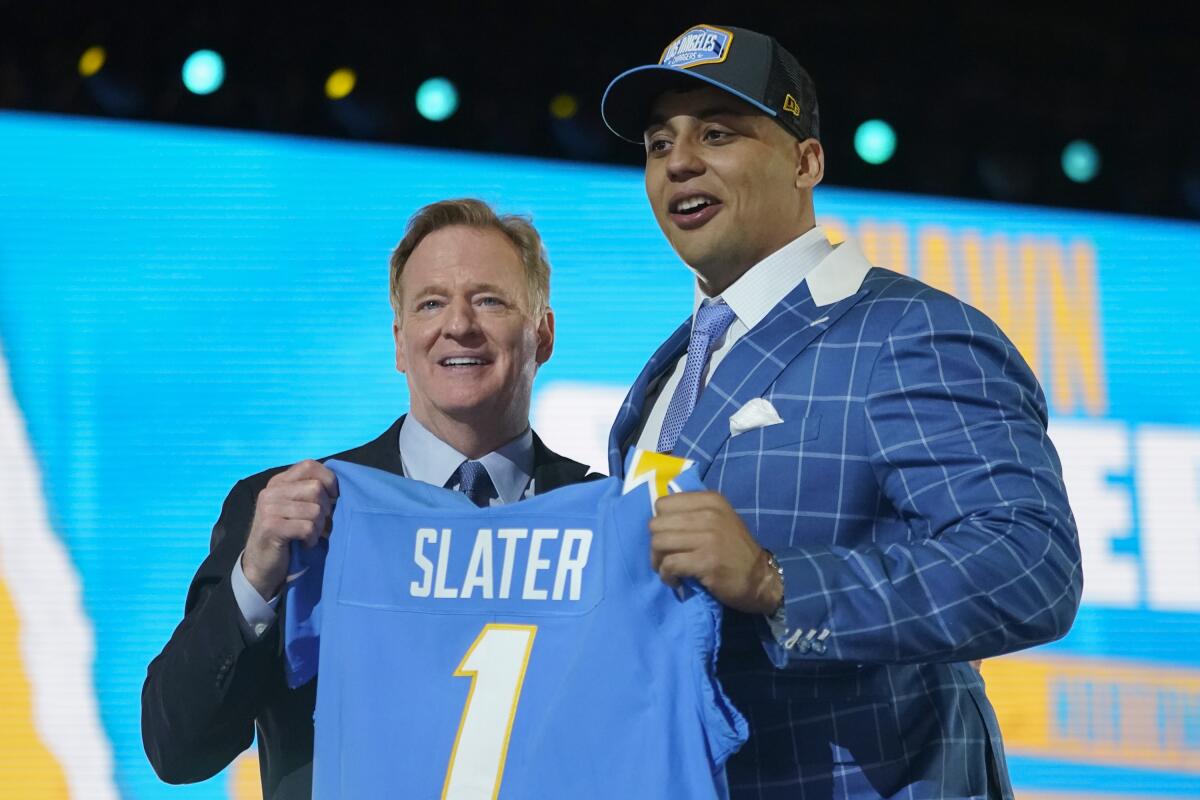
The Chargers have missed the playoffs in each of the last three years, are seven games below .500 since the end of the 2018 season and finished 2021 by losing three of four.
But when it comes to the NFL draft, their two most recent top picks were three-touchdown victories.
Justin Herbert and Rashawn Slater represent two of the greatest personnel triumphs of general manager Tom Telesco’s career. Two of most fortunate, as well.
In 2020, Miami could have drafted Herbert at No. 5 — one spot ahead of the Chargers — but instead opted for Tua Tagovailoa.
A year later, Slater still was available — for a team that desperately needed a game-ready left tackle — at No. 13, the Chargers’ patience rewarded dramatically and emphatically with the addition of a rookie Pro Bowler.
Reporters who cover their teams on a daily basis predict how the first round of the 2022 NFL draft will unfold in The Times’ beat writers’ mock draft.
When the draft begins Thursday, they‘ll have the 17th overall selection and face a great deal more uncertainty about what player and position they’ll select. In a draft that feels less settled than usual, the Chargers fit right in with all their question marks.
Their in-house media team recently sampled 36 mock drafts that had the Chargers taking 11 different players at six different positions.
The most common picks were Northern Iowa offensive tackle Trevor Penning and Georgia defensive lineman Jordan Davis. Just as feasible, though, would be the Chargers selecting a wide receiver or cornerback.
This year, as much as any year before, what the Chargers do will be tied directly to what happens in front of them. As Telesco said Monday, teams can select only from the players still available.
“I put a lot of work into trying to figure it out,” he said of projecting the first round. “I’m like you guys. I don’t really know. I don’t think anybody really knows.”
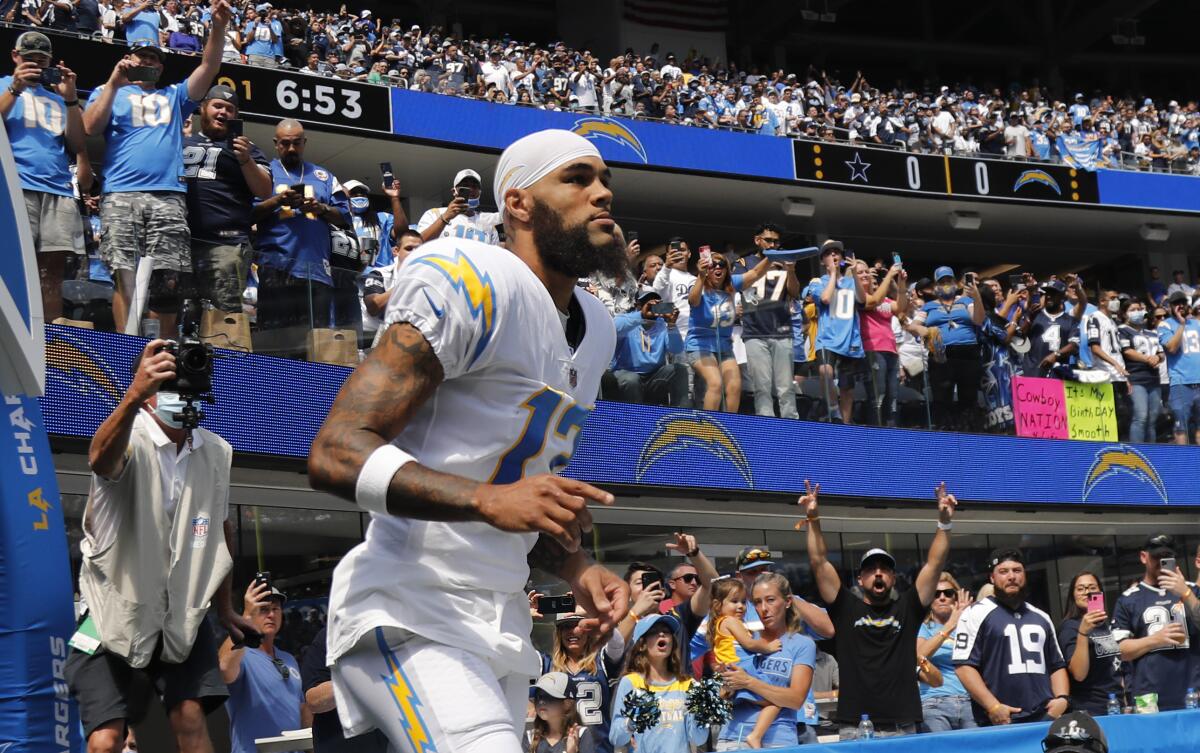
This will be Telesco’s 10th draft with the Chargers, his results as varied as the careers of Keenan Allen (third round in 2013) and Forrest Lamp (second round, 2017).
He hit on Kyzir White in the fourth round in 2018 but missed on Craig Mager in the third three years earlier.
In between, Telesco’s 2017 draft class netted Mike Williams, Dan Feeney, Rayshawn Jenkins, Desmond King and Sam Tevi, each of whom became a starter. Also of note, Williams is the only player among the seven picked in ’17 who is still a Charger.
In other words, Telesco is just like every other NFL roster-builder. He has found both success and failure in an exercise that’s unpredictable, unstable and unparalleled in how precisely it is dissected in real time and in reflection.
“I don’t really grade drafts,” Telesco said when asked for a self-analysis. “I’ll leave that up to you.”
Donald Parham Jr., the Chargers tight end who says his life flashed before his eyes in the end zone, recounts the injury from a fall that many feared might leave him paralyzed.
Last week, ESPN attempted to rank each franchise’s draft performance based on value realized over the last decade, a span that included Telesco’s time with the Chargers plus the year before he arrived.
With the ’17 class being tabbed as Telesco’s finest and the ’14 class (top three picks: Jason Verrett, Jeremiah Attaochu and Chris Watt) his worst, the Chargers finished 24th.
“We’re not infallible as far as talent evaluators,” Telesco said. “I mean, as many as we get right, we get wrong. Even in the first round, probably less than half of these guys will sign a second contract with their own team. That’s not great odds.”
One thing that can’t be denied, however, is how well Telesco has done in the first round. Six of his 10 first-round picks have made the Pro Bowl, and that doesn’t include Williams, a two-time 1,000-yard receiver.
On average, roughly one-third of NFL first-rounders become Pro Bowlers.
A look back at who the Chargers have selected in the NFL draft over the last 10 seasons.
Telesco’s poorest first-round selection likely remains his first pick for the Chargers, offensive tackle D.J. Fluker, who went No. 11 overall in 2013. Fluker started 59 games over four seasons for the Chargers but found most of his success after moving inside to guard.
Defensive lineman Jerry Tillery (2019) and linebacker Kenneth Murray Jr. (2020) have yet to distinguish themselves as big-time, consistent contributors, but both were drafted later in the first round, Nos. 28 and 23, respectively.
“It’s more art than science when you come down to it,” Telesco said. “We use a lot of data to try and crosscheck our eyes.”
To appreciate how difficult it can be to forecast success, consider what was being written just two years ago about Herbert, the Oregon quarterback who lacked anticipation, leadership and the ability to operate under pressure. He also fumbled too much, remember?
Bob Babich, a member of the College Football Hall of Fame who played in the NFL for the Chargers and Browns, has died at age 74.
Entering the 2020 draft, Pro Football Network’s scouting report said Herbert “never showed the ability to carry the offense. Struggled to come through in big spots.”
Bleacher Report ranked him as the No. 27 prospect overall, eight spots behind Murray and, in attempting to find a current NFL quarterback who was comparable to Herbert, opted for Blaine Gabbert.
An analyst at Pro Football Focus, asked if Herbert could be a 10-year NFL starter, answered: “I don’t see it. I think he has a long career but I think he fizzles out similar to Marcus Mariota.”
This time of year, it’s always a good idea to recall that the widely acknowledged greatest quarterback in NFL history was chosen in the sixth round, a fact that, to this day, continues to motivate Tom Brady.
More to Read
Go beyond the scoreboard
Get the latest on L.A.'s teams in the daily Sports Report newsletter.
You may occasionally receive promotional content from the Los Angeles Times.

